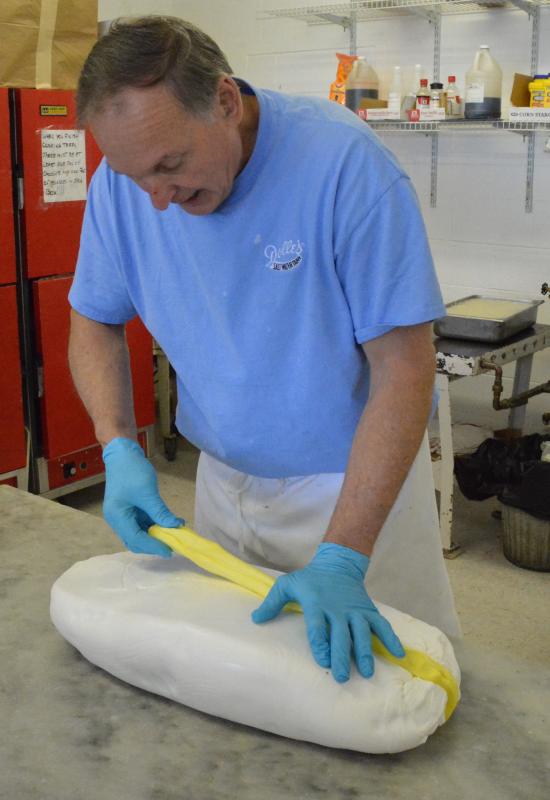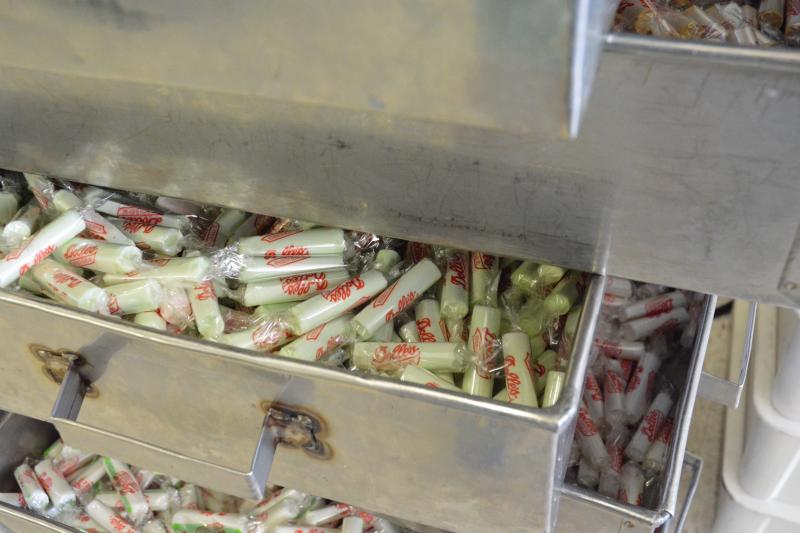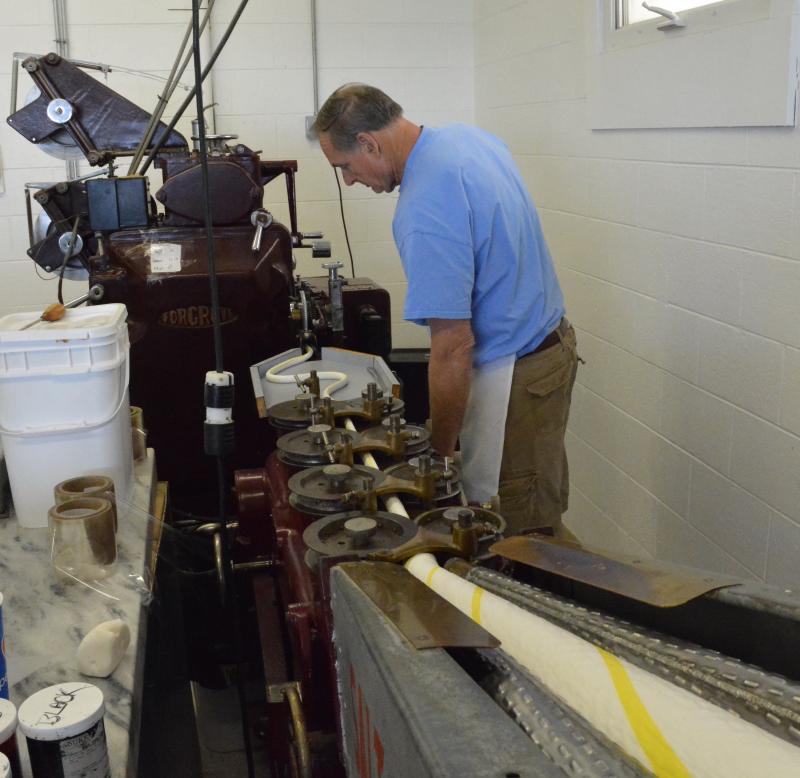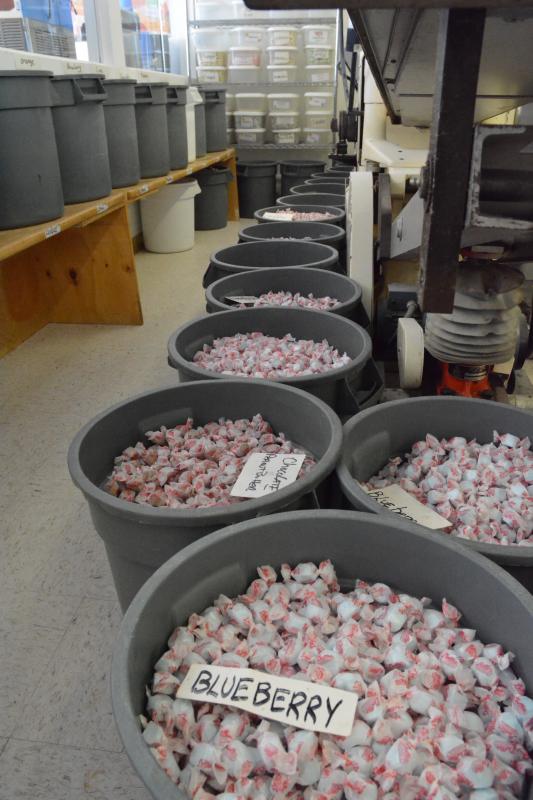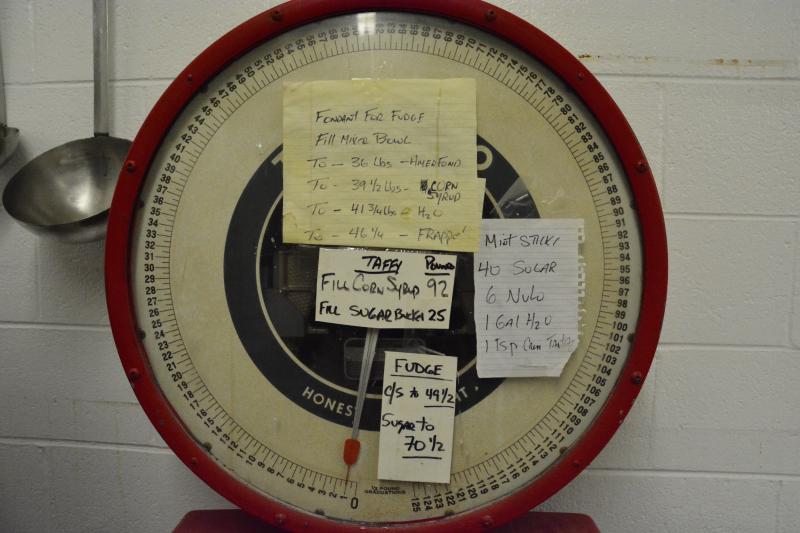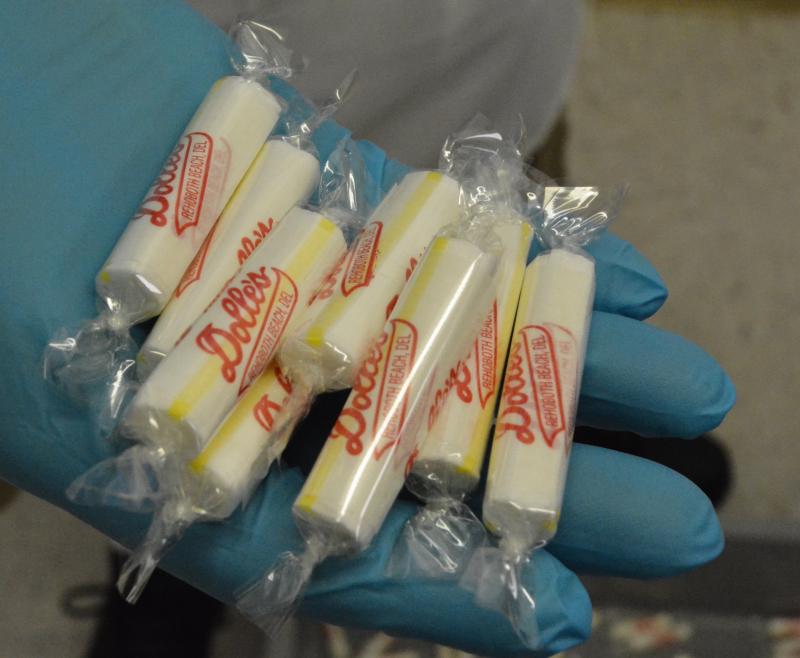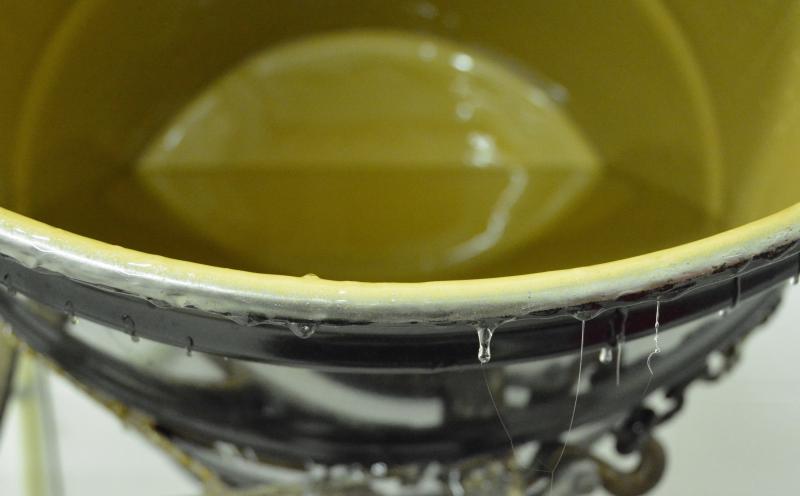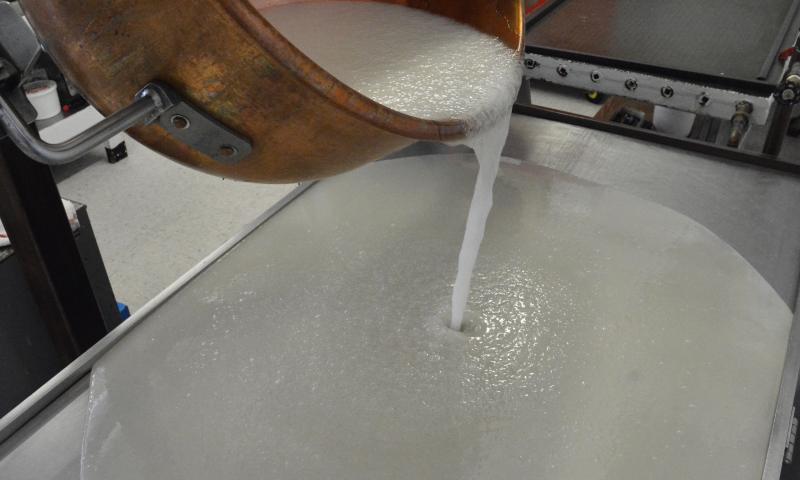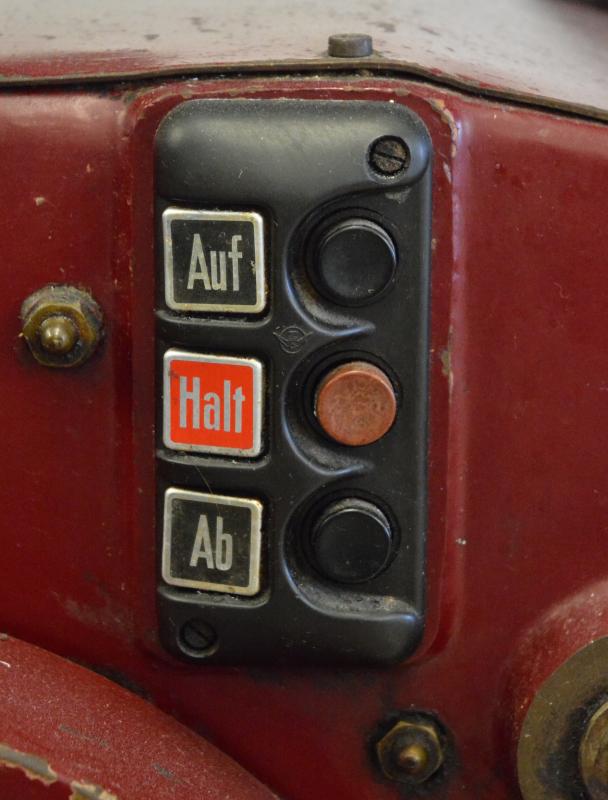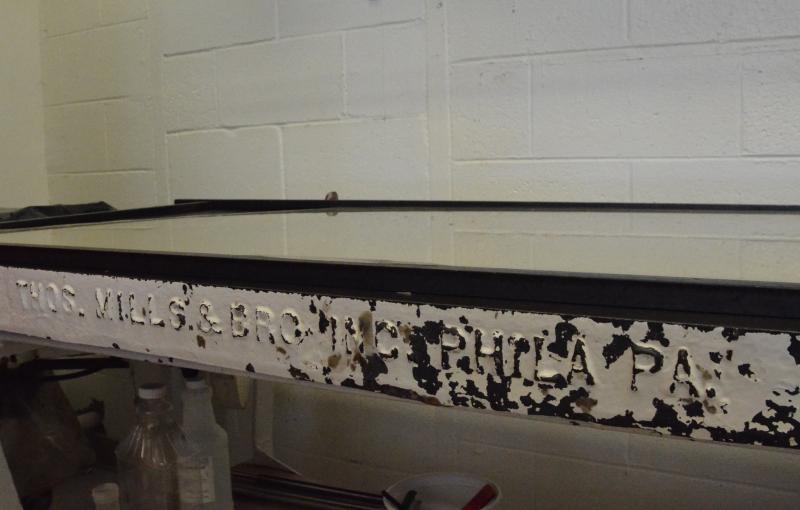Tom Ibach: Keeping Rehoboth’s candy tradition alive
Dolles Candyland owner Tom Ibach is in the thick of it now.
It’s the week before Independence Day in Rehoboth Beach and Ibach, the third generation of his family to run the business, is over a month into working 90-hour-weeks. He’s fidgeting with a taffy-log machine that’s older than he is, getting it ready for the morning’s first batch.
Ibach said he has been working long hours because it’s getting harder and harder to find employees, including foreign exchange students. He talks for a few minutes about how all businesses are feeling the same hurt for employees, and he said it really puts a lot of business owners in a predicament.
“It’s getting worse and worse all the time,” he said, done with fidgeting and now ready to make a few batches of taffy. “I’ll do whatever it takes. It’s my business.”
Established in 1926 by Thomas Pachides and Rudolph Dolle, Dolles Candyland has been in Rehoboth for nearly 100 years. It’s been at 1 Rehoboth Ave. and the Boardwalk since 1927. In 1959, Pachides, Ibach’s maternal grandfather, purchased Dolle's interest in the business. The original building, an old YMCA, was destroyed in the Storm of ‘62, but it was rebuilt with the huge orange Dolles sign – and has been a Rehoboth landmark ever since.
Ibach took over the business in 1984, after his grandfather died. Ibach said his grandfather was trained as a candy maker in Philadelphia at a time when there were candy stores on every corner.
Ibach grew up in Wilmingon, but he spent his summer’s in Rehoboth, working at the family candy store. He said he was taught how to work the cash register at the age of 10.
“It’s a family business, and they teach you how to start working at an early age,” said Ibach.
Ibach has an undergraduate degree in accounting and a master’s degree in business administration. He said he was doing the books for a construction company before taking over Dolles. He said he still uses that knowledge now – he doesn’t do the company’s taxes, because the laws change so frequently, but he does know how his accountant wants things organized at the end of the year.
There’s an art to making fudge and to fudging numbers, but at the end of the day there are specific rules that have to be followed for both jobs. In some ways, Ibach said, making candy and accounting are similar.
“There’s an order for everything,” he said.
The cutting blades for the cut-and-wrapping portion of the overall taffy-log machine have to be sharpened at a 7-degree angle. The corn syrup and sugar mixture for the taffy is boiled to 247 degrees before being placed on a cooling table. There are specific ratios of corn syrup to sugar to produce different types of candy. The production room is kept below 70 degrees and as free from humidity as possible; otherwise the machines begin to gum up.
Ibach said he still uses the same recipes to make the candy that his grandfather learned, and some of the same pieces of equipment, older than Ibach, remain. The liquid taffy comes out boiling hot, and there’s a cooling table from Thomas Mills and Brothers, a famous candy machine manufacturer from Philadelphia.
The taffy-log machine is the prized antique piece of equipment. The machine takes the taffy from a single 35-pound piece – picture a watermelon-sized piece of banana flavored taffy – to hundreds of smaller pieces. This machine survived The Storm of ‘62, and Ibach said it would cost every penny of $250,000 to replace.
Ibach said the long taffy machine is actually three different machines working together – the batch-former, the rope-sizer and the cut-and-wrapper. The first two are from Germany, while the cut-and-wrapper is from England. He said the manufacturer of the cut-and-wrapping machine, Forgrove, has to custom make each piece if something breaks. Forgrove made more than one of these machines, but each one is different. If there’s a problem, Forgrove looks up the serial number and they’ll make the specific part.
“It’s like a Rolls-Royce,” he said.
In addition to keeping books and making candy, Ibach is the in-house mechanic. He said there are no local technicians who can fix the machines the stores uses. Ibach said his dad was good at working with mechanical things.
“I taught myself how they all work,” he said. “We do most of the repairs in house.”
Some of the machinery has changed. The mechanical pulling machine adds air to the taffy, which gives it the chewiness, said Ibach. The machine, and it’s four metal hands, makes quick work of a process that used to be done by hand. Ibach said, back in the day, his grandfather would hook the taffy to the wall, stretching it 10 feet and then throw it back against the wall. He would repeat this until the taffy had absorbed enough air.
“It always drew a crowd,” he said.
Ibach said he keeps about 1,000 pounds of taffy on hand. Once made, the taffy stays good for three months, so he could make 10,000 pounds of it at the beginning of the season, he said, but he likes serving taffy that’s as fresh as possible. The morning’s 12 batches would later be boxed for sale.
“It will move quick. It’ll be gone by the end of the weekend,” he said, finishing his third batch.
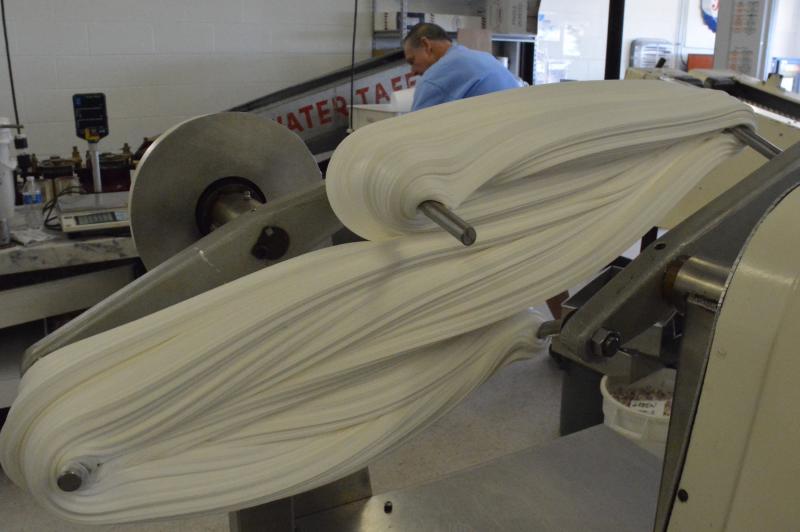
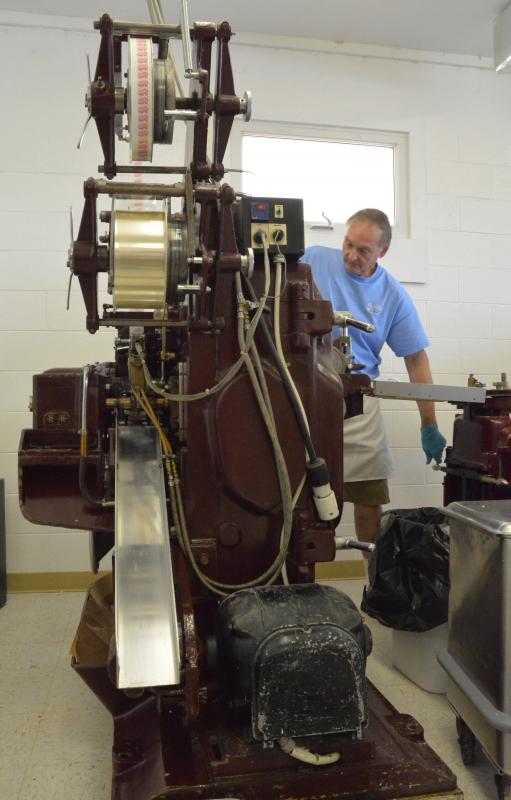
Chris Flood has been working for the Cape Gazette since early 2014. He currently covers Rehoboth Beach and Henlopen Acres, but has also covered Dewey Beach and the state government. He covers environmental stories, business stories, random stories on subjects he finds interesting and has a column called ‘Choppin’ Wood’ that runs every other week. Additionally, Chris moonlights as the company’s circulation manager, which primarily means fixing boxes during daylight hours that are jammed with coins, but sometimes means delivering papers in the middle of the night. He’s a graduate of the University of Maine and the Landing School of Boat Building & Design.












